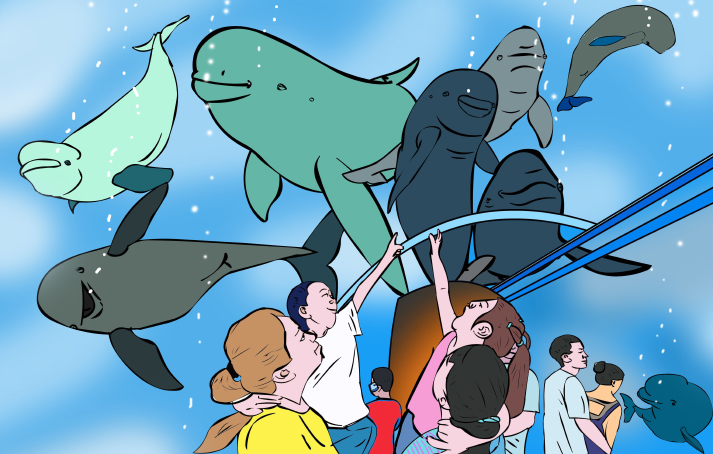| Lifestyle |
| Will captive breeding save the Yangtze porpoise? | |
|
|
 (LI SHIGONG)
In 2016, a Yangtze River subspecies known as the narrow-ridged finless porpoise was formally added to the International Union for Conservation of Nature (IUCN) Red List of Threatened Species, with little over 1,000 of them still roaming the wild at that time. This endangered species, well-known for its lovely "smiles," also falls under China's first-class protection. How to preserve this precious animal species, whose population is even lower than that of the giant panda, proves a conundrum to experts and lovers alike today. In April, the largest number of Yangtze finless porpoises, 19 in total, started the relocation from their habitats in the Yangtze to aquariums, for the sole purpose of protection. Doubts are intensifying over why these porpoises are being moved to aquariums for the purpose of captive breeding, instead of helping them repopulate and live a life of freedom along the river. Are profit-driven aquariums really able to assist with the repopulation of this species? Or will this practice damage the species? Opinions are divided. Wang Fang (www.guancha.cn): Aquariums, like zoos, are inferior to nature in many aspects. More importantly, animals are denied a lot of things that they can easily do in the wild. This is extremely harmful to social animals, who may feel lonely and uneasy due to a lack of interaction with their "peers." Therefore, it's very difficult to release captive-bred animals back into the wild. International expert opinion holds that aquariums or zoos have four functions, namely, scientific research, animal protection, education and tourism. However, it's a pity that few zoos or aquariums in China are apt at scientific research, protection and imparting animal-related knowledge. Biology has the concept of the minimum viable population, meaning that a certain species can survive for the time being when there are at least 50 of them in the wild; minimum of 500 promises that they will manage to survive for a much longer period of time. Several 2017 statistics show that the wild porpoise population was already 1,012, more than 500, but they are scattered across different sections of the Yangtze, Poyang Lake and Dongting Lake. From a scientific perspective, it's better not to seize even a single porpoise from the wild. Dai Nianhua (Science and Technology Daily): The preservation of finless porpoise habitats and captive breeding can go hand in hand. Yangtze finless porpoise protection must materialize immediately, or it will be too late, as their population keeps declining sharply. The final objective of captive breeding is to restore the population of this species so that more of them can be sent back into nature. Moreover, the success of this program will provide more experiences for the breeding and preservation of other wildlife species. The risk of this species' extinction still looms large, given their current situation, and at best their extinction is being delayed if nothing is done to help the porpoises that currently swim in the Yangtze. Li Yanliang (Science and Technology Daily): Despite progressively stronger protective measures, the finless porpoise population still faces various risks in the Yangtze, including manmade disruption. Captive breeding is an important method to protect and study these animals. Our "national treasure," aka the giant panda, is well known around the world. They are also on display at zoos everywhere. The purpose of doing so is to inform people about pandas. Few people have ever seen a porpoise with their own eyes and their knowledge of this species is thus very limited. Porpoises are much scarcer than pandas, but the input in their protection is much less than that in the protection of pandas, so the former's safety poses a much bigger challenge. Meanwhile, the public pays very little attention to porpoises due to the lack of publicity. Aquariums, where the animals roam the water but do not perform tricks, will help the general public to come in close contact and learn more about the finless porpoise. Copyedited by Elsbeth van Paridon |
|
||||||||||||||||||||||||||||
|